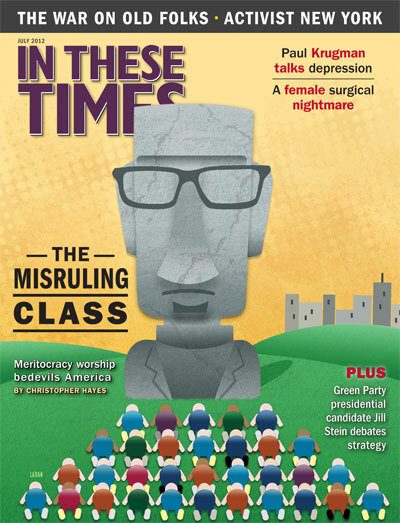
We’re living in an era of unparalleled, unfettered political filmmaking — cheap consumer technology has made it so, allowing anyone with a camcorder and a FinalCut download to make their own spiffy feature about What’s Wrong with Just About Everything. Mix in the eight-year window of wonders we called the Bush Administration, and a new epoch of cinematic engagement was born.
Films and filmmakers have been plentiful, but so have audiences. I remember in the summer of 2004 when no less than 12 nonfiction dissenting acts of cinema were playing in New York (including Fahrenheit 9/11)—twelve docs, playing simultaneously in one city in the summer, all of them focused furiously on the political present. By now, scores of filmic statements are also Web streaming, On Demand-ing, YouTubing, DVDing and playing on multiple cable stations, be they TopSiders-on-the-ground social exposés or cut-and-paste news footage compilations or talking-head autopsies on the recent past.
If you’ve spent any time at the country’s bajillion film festivals, including nonfiction-focused ones like the Human Rights Watch Film Festival or Amnesty International Film Festival, you may have noticed that the form has become arthritic. The intentions behind the films may be noble, but the movies are hell to watch: sniffly, repetitive, unoriginal paeans to injustice (or whatever), and to the filmmakers’ own proud and privileged sense of pity.
The tropes, all suggesting emotional tourism rather than understanding, are codified by now: multiple sunsets; “place-setting” shots through passing SUV windows of poor and/or evocative landscapes as the soundtrack lilts with earnestly strumming guitars; poor children standing in doorways looking directly into the lens; poor and/or persecuted people filmed in their kitchens pretending to prepare a meal; the walking shot behind and over the right shoulder of the subject; “impromptu” interviews ending in tears; summarizing title cards eliding large swatches of potentially ambiguous data; punctuative cutaways to the sky or to a seemingly despairing animal after a dramatic bit of testimony; spliced-in news footage used only for emphasis; and so on.
When the first real flush of doc-making hit, spawned in the ’60s by new lightweight cameras and new levels of political awareness, there were no rules, and we got roiling works of international discontent like Forough Farrokhzad’s The House Is Black (1962), Emile de Antonio’s Point of Order (1964), Frederick Wiseman’s Titicut Follies (1967), Fernando Solanas’ The Hour of the Furnaces (1968), Marcel Ophuls’s The Sorrow and the Pity (1969), Arnold Perl’s Malcolm X (1972), the anonymous collective film Winter Soldier (1972), ad infinitum. In the ’70s we had the experimental journeys of Jean-Luc Godard, Werner Herzog and Chris Marker. The films were sometimes ferocious about their political ideas and sometimes abstrusely subtle, but no two were alike.
Form matters. At the very least, a director’s thoughtful exploration of film form, and discretion about using manipulative clichés, demands that we take on the film’s subject matter in a fresh way, out of our comfort zone. The confrontational films of Wiseman, de Antonio and Solanas in their heyday did all they could to prevent the viewer from falling into a complacent stupor, which should be the proactive task of all political films.
Today’s films blur into a homogenized pap, and since only your emotive nerve receptors are being targeted, you rarely come away having learned anything of value. How this tame vocabulary set came to be so prevalent is open for speculation — I’d point to cable TV’s standardized-gloss approach, as well as the ubiquity of the technology itself, which makes it all too easy for even witless filmmakers to look professional.
The ultimate impact of this creative drought is on the very nexus any political doc strives to form: resonant triangulation between the subject, the camera and the viewer. The story of the habitat-depleted Amazon native or Monsanto-ruined Punjab farmer or returned Iraqi-war vet is not told in these films, only summarized into televisable bites, and we as viewers come away with little more than a vague sense of sympathy fatigue.









